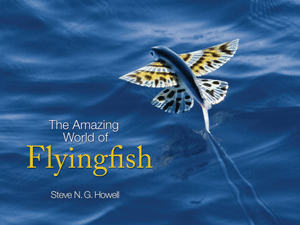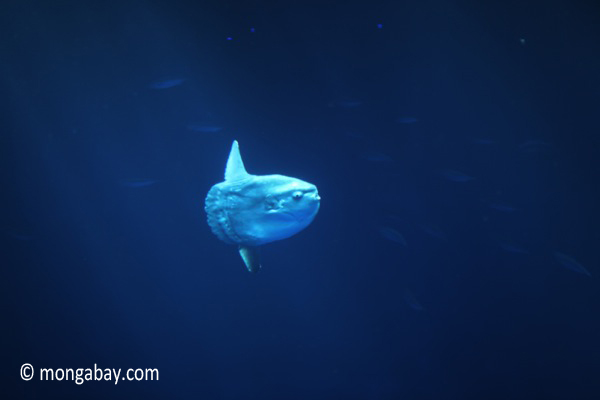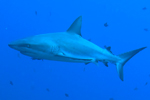Reporter’s Journal: Bomb Harvest
Porters sort and tally a week’s worth of landings from a bomb fishing crew before carrying the catch to the docks in Makassar, Indonesia. Each plastic basket is worth Rp. 100,000 ($8). The full tally for this boat was Rp. 18,800,000 or $1404. The porters get paid a percentage for shuttling the catch to shore and selling the fish to wholesale distributors in the city. This photo was taken by Mongabay.org’s Special Reporting...
The Amazing World of Flyingfish – book review
By Gabriel Thoumi Do you remember when you were a kid and you heard about flyingfish for the first time? I do. I was amazed. Fish that could fly! I wondered how far they flew and if they flew for real. The first time I saw flyingfish in person, I had the good fortune to be sailing 3,000 miles across the Atlantic Ocean, south to north. We were giddy with delight to see these amazing small fish of the sea. In The Amazing World of...
Reporter’s Journal: A Wood & Glass View
Wood and glass goggles used by traditional divers throughout Sulawesi. Though produced near-exclusively by the Bajau sea gypsies, “traditional” goggles are commonly used, regardless of ethnic group, when spear-fishing, cyanide fishing or collecting sea cucumbers, groupers or fish killed with bombs that are detonated underwater. However rubber recreational dive masks are becoming more prevalent. This photo was taken by Mongabay.org’s...
Reporter’s Journal: In Search of Sardines
Community members crowd aboard a slerek purse-seiner in Muncar, East Java, the morning after a successful sardine fishing expedition. University of British Columbia researchers calculated that nearly half the landings in Muncar are distributed to the crew, their relatives, and their neighbors, to eat at home or sell. Though an insurance for protein-rich diets among the local community, the practice means that commercial sardine sales...
Reporter’s Journal: Infant Shrimp
A technician checks on week-old shrimp larvae or nauplius, at the world’s largest shrimp and mollusk broodstock center in Bugbug, Indonesia. The center hopes to become a major supplier inexpensive and healthy “parent” shrimp to Indonesia’s domestic shrimp farming industry, to reduce reliance on pricier and occasionally disease-ridden imports from abroad. Indonesia is one of a handful of shrimp-producing countries unaffected by...
Reporter’s Journal: Fishermans’ Wives
Fishermens’ wives negotiate a price for freshly caught sardines in Negara, a town on the shores of the Bali Strait. The strait is about to become Indonesia’s first region to be managed under an ecosystem-based approach to fisheries management. This photo was taken by Mongabay.org’s Special Reporting Initiatives fellow Melati Kaye, who is reporting on the state of the fishing industry in...
Reporter’s Journal: Disappearing Home
By Melati Kaye A boy takes in the sunset on Barang Lompo, one of the Spermonde Islands in Indonesia. The loss of local reef cover from destructive fishing practices and soil runoff from the nearby city of Makassar exposes islands like Barang Lampo to extreme weather. Over the last thirty years, this tiny island, like others in the region, has lost a tenth of its landmass from the erosive force of storm surges and increasingly larger...
Reporter’s Journal: Fighting poachers and Mother Nature
Fijians communities are largely in charge of managing their waterfront. Volunteer fish wardens in the village, appointed by the chief or the Minister, are the only official members of a village who can legally stop poachers. Though they rarely have any equipment to enforce protection of their tabus (swaths of temporarily protected marine areas inside their fishing grounds), they are harder pressed to fight the effects of climate...
Reporter’s Journal: The Lesser Fish
In Fiji’s capital city of Suva, middlemen buy directly from the fishers. The majority of the fish arrive early Saturday morning, indicating many of the reef fish are caught at night while many fish are asleep, making them easy targets for spearfishers. In the past, larger quantities of fresh fish was available daily. Now the sellers make fewer catches stretch across the week. The overwhelming concern about the region’s...
Reporter’s Journal: Dock Boys
By Melati Kaye “Dock boys” take a swim break from sorting and carrying fish at Makassar’s Paotere harbor, where fish caught with hook and line, homemade bombs, and cyanide are brought to port and sold. This photo was taken by SRI fellow Melati Kaye, who is reporting on the State of Indonesian Fisheries.
Reporter’s Journal: a different kind of leopard
By Melati Kaye March is leopard coral grouper season in South Sulawesi’s Spermonde islands. The live fish sell for $30 per kilogram. Dead fish fetch less than a third of that price. Careful hook and line fishermen can sometimes manage to keep their catch alive. But a surer method is to stun the fish with cyanide, an illegal but widespread practice. This photo was taken by Mongabay.org’s Special Reporting Initiatives fellow...
Economic worth of living sharks (video)
It turns out that sharks are worth more alive than dead. According to a new study, a single shark is worth $1.9 million over its lifetime as a tourist attraction in the island nation of Palau. Sold for consumption the shark is worth around $108. In this case a shark is worth a stunning 17,000 times more alive than dead. Sharks worldwide are being decimated, largely for the Asian delicacy shark fin soup. Some populations have fallen by...
Conservation on the ground: how traditional fishermen saved sharks in Madagascar
Malagasy family helping fisherman take his boat out to sea . Photo by Rhett A. Butler. Or, Guitarfish a Go-Go- Bribes and barrages in Belo-sur-Mer By: Brian Jones, Blue Ventures Conservation in Belo-sur-Mer, Menabe, Madagascar. YOU’VE got to admire the mettle of people who, despite the cards being seemingly insurmountably stacked against them, can still stick to their guns and stand up for what they believe in. I didn’t give...
Activism: dams on the Mekong River
Note: mongabay.com does not endorse the action below, but believes its readers may be interested in taking action or discussing the issue in comments. Fishing on the Mekong. Photo by: Rhett A. Butler. A coalition of NGOs, lacademics, journalists, artists and local people have started a petition against a series of dams planned by Laos, Cambodia, and Thailand. According to the organization, the massive dams will upend the river’s...
Photo: U.S. bans shark finning
In early January the U.S. Senate passed the Shark Conservation Act, legislation that bans shark finning in U.S. waters.
Activism: the great bluefin tuna boycott
Note: mongabay.com does not endorse the action below, but believes its readers may be interested in taking action or discussing the issue in comments. Bluefin tuna. Photo by: NOAA. The Center for Biological Diversity has launched a bluefin tuna boycott after the fish’s regulatory body, the International Commission for the Conservation of Atlantic Tuna (ICCAT), failed to drastically limit the catch this year. The group has also...
NY Times Article on Europe’s Hunger for Illegal Fish
Yesterday the New York Times printed an enlightening article on the massive illegal seafood trade in Europe. It may be time for a moratorium on eating seafood altogether… The article can be accessed here: http://www.nytimes.com/2008/01/15/world/europe/15fish.html?scp=2&sq=fish+europe An excerpt (by Elizabeth Rosenthal): “Fish is now the most traded animal commodity on the planet, with about 100 million tons of wild...













